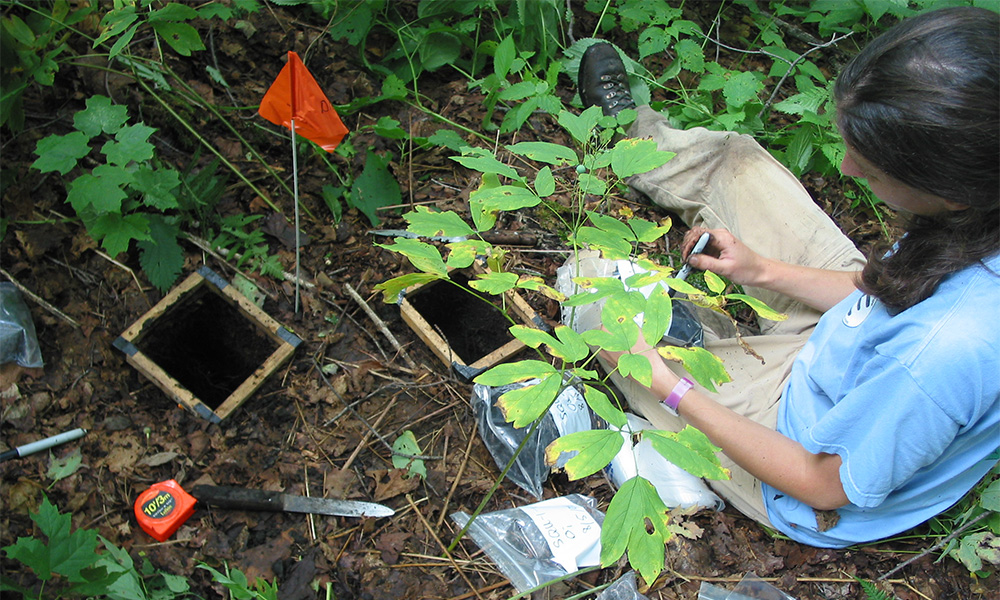Earthworms and Elevation Affect Soil Carbon in Vermont Forests
Nov. 5th 2021Carbon dioxide is a greenhouse gas that contributes to climate change. Therefore, many initiatives are underway to decrease the amount of carbon in the atmosphere. Soil can play an important role in this effort by soaking up carbon from dying and decaying plants. In this way, forest carbon is a major factor in both global and local ecosystems.
There are many different determining factors for the level of carbon in a forest soil. To examine these relationships, researchers from the University of Vermont, Harvard University, and the Vermont Department of Forests, Parks and Recreation conducted research on the interaction among earthworms, land-use history, soil chemistry, and tree species on soil organic carbon (SOC) at 18 managed forest plots in Vermont.
"Understanding interactions between soil nutrients, SOC, and earthworm activity can be crucial in predicting future forest dynamics, especially where management strategies focus on carbon sequestration and storage,” said lead author Donald S. Ross, Emeritus Research Professor at UVM.
In 2008-2009, the researchers established the study sites in managed forests, all with the goal of monitoring changes in soil organic carbon (SOC) and soil nutrients before and after tree harvest. Each site chosen consisted of a plot designed according to the USDA Forest Service Forest Inventory and Analysis, with three additional soil sample plots per site. Sites were also chosen to represent most of the biophysical regions of Vermont.
Four years after establishment of the plots, the researchers added additional scope to their study to better understand the entire picture of SOC in these areas. They returned to the sites to count and identify earthworm populations. They also created a site-specific plan for researching the land-use history at each location in order to help better understand specific distributions of SOC. The researchers hypothesized that the sites with higher earthworm populations would have a history of intensive agricultural use and therefore that these sites would have a thinner forest floor with less SOC.
To collect soil samples, researchers dug up the plots, brought the soil back to their lab for chemical analysis, and assessed the resultant data to determine the specific chemical makeup of each sample. Earthworm populations were determined through hand counts. To determine the land-use history of each site, the researchers combined historical analysis with on-site surveying. Some of this historical research dated back as far back as 1769, and relied on such sources as agricultural censuses and town gazetteers.
The results of the research demonstrate that the best predictor of forest floor SOC is elevation. In addition, earthworm population and species richness decreased as elevation increased. Land use history did play a role in determining earthworm population, as well, with former pasture sites that had no earthworms having higher SOC than sites with larger numbers of earthworms.
Overall, the researchers’ hypothesis that a greater prevalence of earthworms equals less carbon in the forest floor was confirmed. However, the land-use history of more intensely farmed lands was not definitive in predicting earthworm density. The Vermont plots show that soil chemistry and tree species may play as influential a role in earthworm prevalence as land-use history.
“In the future, more research should be conducted at these plots, as sampling following forest management will provide more chronological information on relationships between land use, soil carbon, and earthworms,” said Ross.
 ecoNEWS VT
ecoNEWS VT